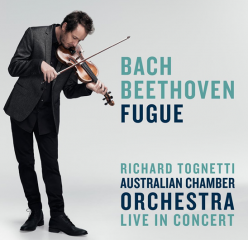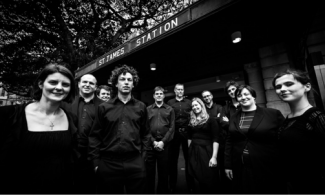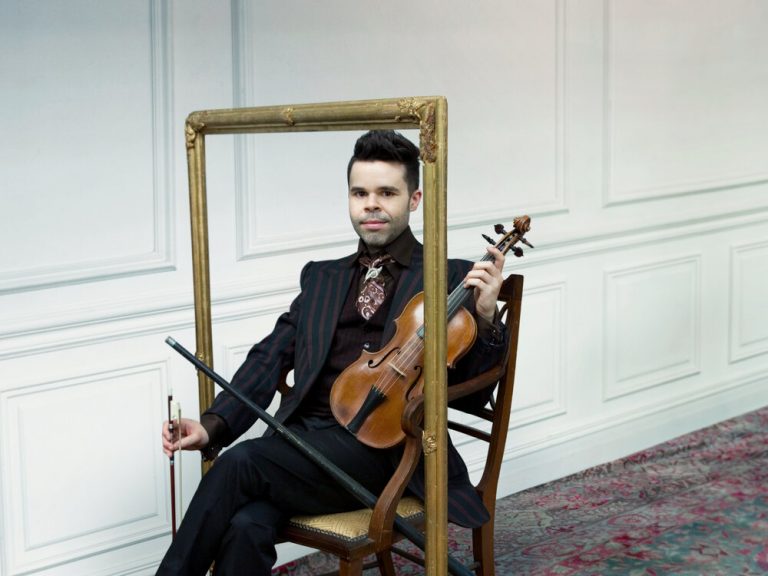Album Review: Bach | Beethoven: Fugue/ Australian Chamber Orchestra/ Tognetti

The Australian Chamber Orchestra’s new album release Bach | Beethoven: Fugue on ABC Classics, couples the contrapuntal writing of Johann Sebastian Bach and Ludwig van Beethoven, highlighting their similarities, whilst contrasting the styles in which they were written.
Richard Tognetti leads his ensemble of 20 musicians, augmented with players from the Sydney and Melbourne Symphony Orchestras, in a performance recorded live in concert at Sydney’s City Recital Hall in May 2016.
The album contains the first four ‘simple fugues’ from Bach’s Art of Fugue, BWV 1080, the Contrapunctus I, II, III and IV, followed by Beethoven’s String Quartet in B flat major, opus 130, complete with its original sixth movement, the Grosse Fugue, opus 133.
Both works were written late in the composers’ lives and shatter convention; both are fiendishly difficult and both have intriguing back stories – the Art of Fugue was composed in the 1740s and left incomplete. It was perhaps intended as an exercise to demonstrate a variety of contrapuntal techniques built on the same simple theme. Bach did not specify the instruments for which he composed this exemplar. In fact, he avoided using the term ‘fugue’ early in the work, preferring the term ‘contrapunctus’, which dates from the 14th century, derived from the Latin ‘contra punctum, i.e. ‘note against note’, referring to different musical lines which sound simultaneously according to a system of rules.
Beethoven’s Grosse Fugue was composed as the final movement to the String Quartet in B flat major, opus 130, the third quartet that he wrote for a commission by Prince Nikolay Golitsïn, a cellist and music lover from St Petersburg. It was so challenging for both players and listeners that the publisher requested a more user-friendly finale. Beethoven agreed to this and composed a new final movement – the last complete piece he would write. The Grosse Fugue would live on as a separate work, the opus 133 and remains as one of the most challenging works in the repertoire.
The opening strains of Contrapunctus I in four parts, are arresting with a distinctive enunciation of the subject, introduced by the second violin, and taken up by the other strings in turn. In Contrapunctus II, the lower strings present the subject, then taken up in four parts, in a dotted French-style rhythm. Things get more complicated in Contrapunctus III with the theme inverted and thickened with chromatic harmonies which Tognetti and the musicians take to an allargando ending before touching base with the 20th century in Contrapunctus IV played as a pointillistic pizzicato, augmented by a soft vocalise from the orchestra, reminiscent of the great jazz adaptations of Bach by Jacques Loussier and the Swingle Singers.
That Beethoven composed his opus 130 whilst profoundly deaf makes this string quartet and its original sixth movement, the Grosse Fugue a superhuman achievement. Beethoven’s deafness may go towards explaining what Tognetti describes as a “hyper-controlled cacophony, rousing responses ranging from rapture to despair.” The intrinsically symphonic nature of the writing for string quartet lends itself to being performed by a chamber orchestra and Tognetti adds “In offering an orchestral experience of this quartet, we are careful not to exploit the greater dynamic capabilities at the expense of the innerlich heart of Beethoven’s uniquely powerful music.”
Nonetheless, with five times as many musicians as a string quartet, the ensemble controls its dynamic whilst giving the music a satisfying glow. The first movement is all lushness and romance, followed by a diabolically paced Presto which tests both technique and stamina. The fourth movement, (Alla danza tedesca) is played with sheer grace and the Cavatina becomes an intensely lyrical, throbbing aria before the Grosse Fugue makes its declamatory opening statements, then throwing to its complexities which could well tip over into ‘uncontrolled cacophony’, but for the ACO’s clarity, cohesion and direction.
The CD booklet gives artist insights, musicological information and biographical notes.
Bach | Beethoven: Fugue is a marvellous comparison of the simple beginnings of the fugue with a supremely challenging, later construction. The articulation of parts and their well-balanced interweaving with the gentle progression of complexity makes this album eminently suitable for counterpoint neophytes as well as for seasoned listeners. With its brilliant playing, the ACO has an album that is well worth listening to either for pleasure or as an intellectual exercise.
Shamistha de Soysa for SoundsLikeSydney©
1CD Digi | Digital Album | ABC 4814960







